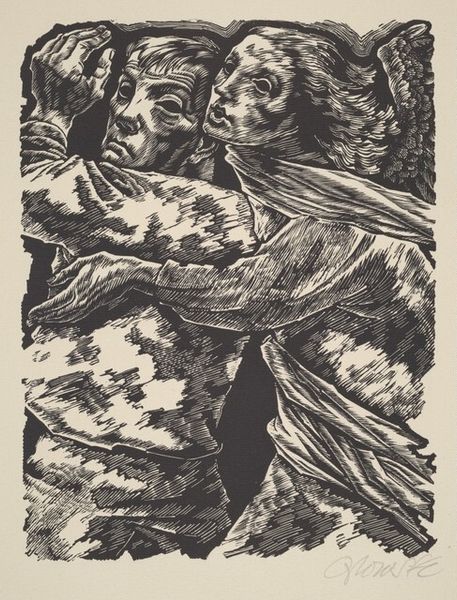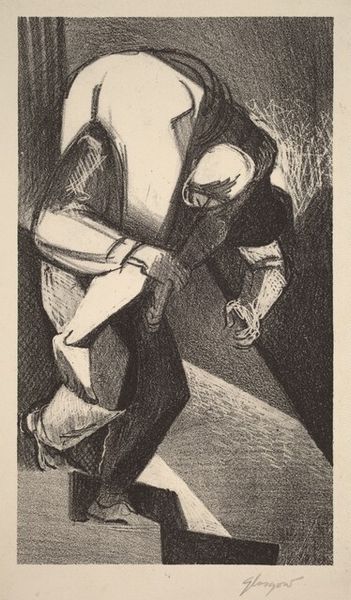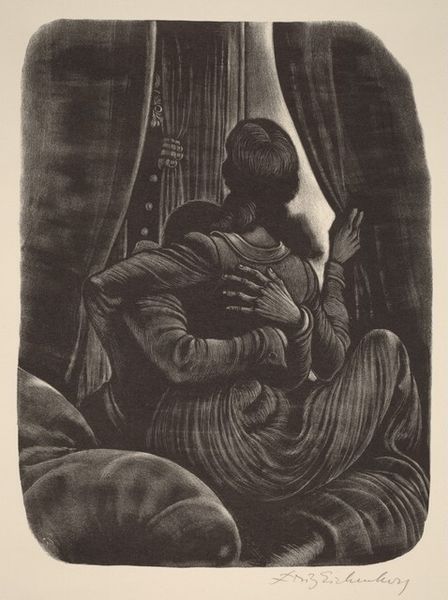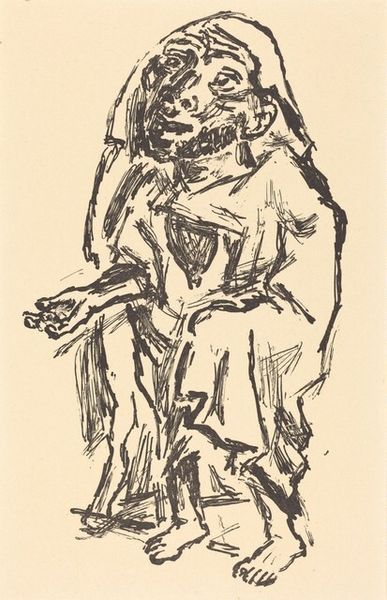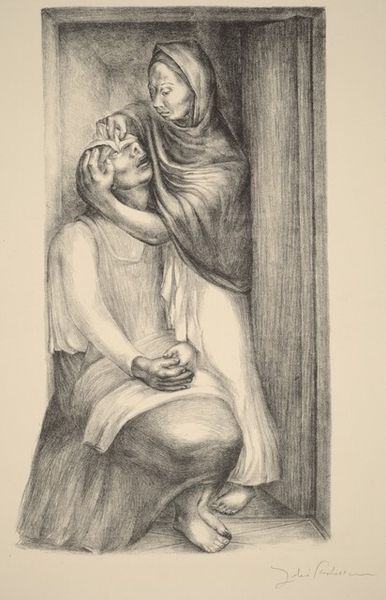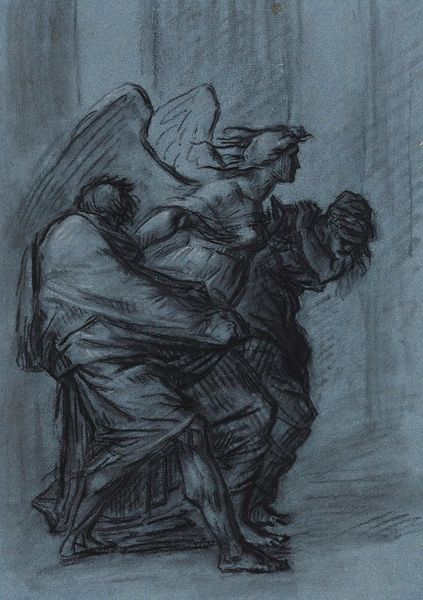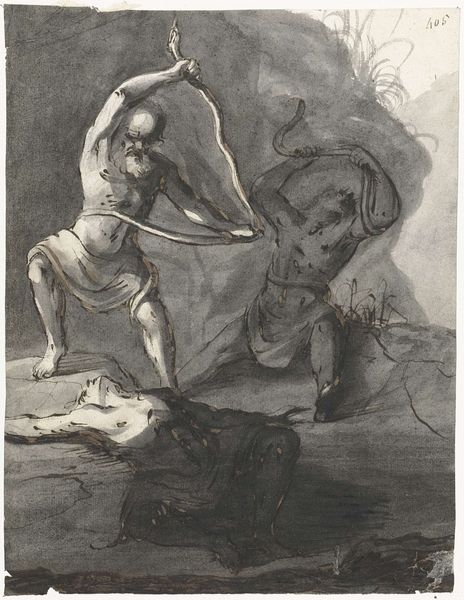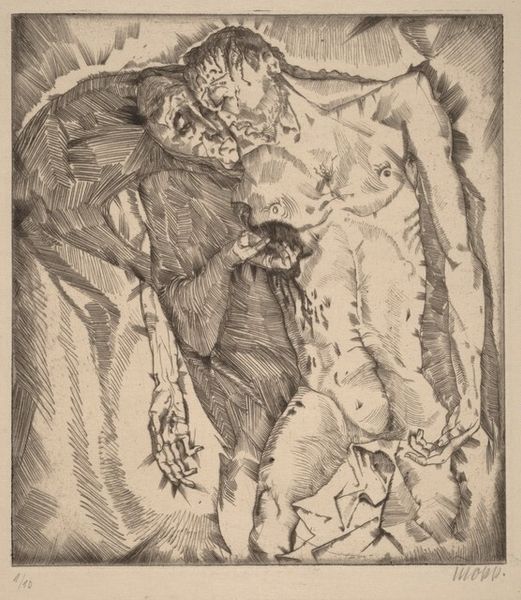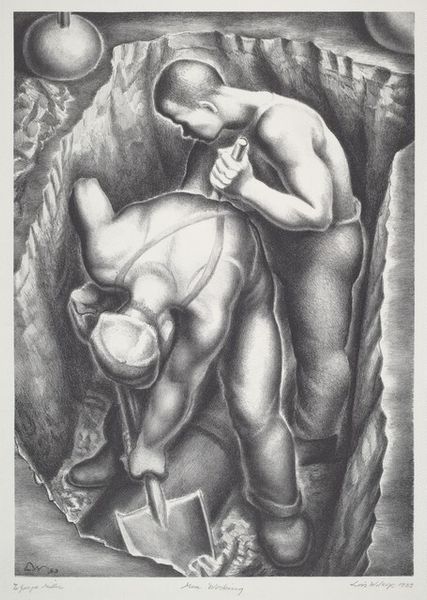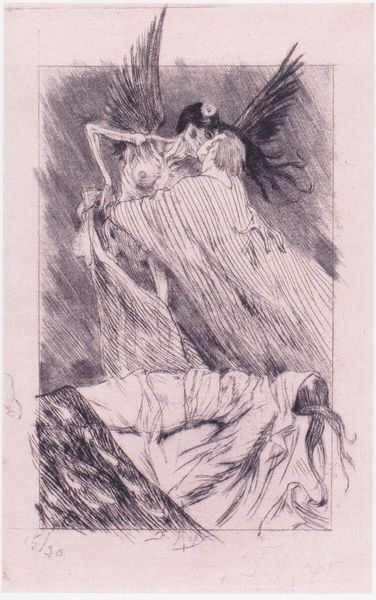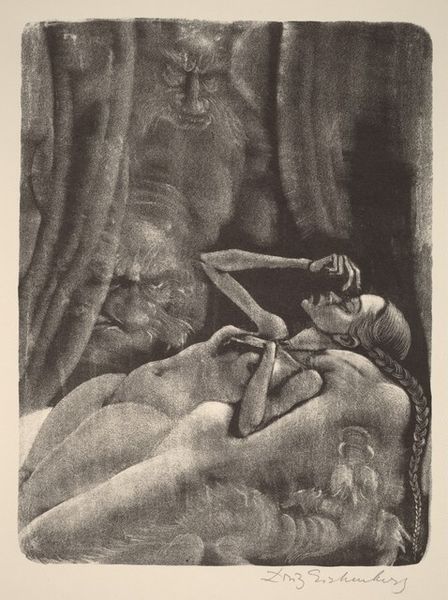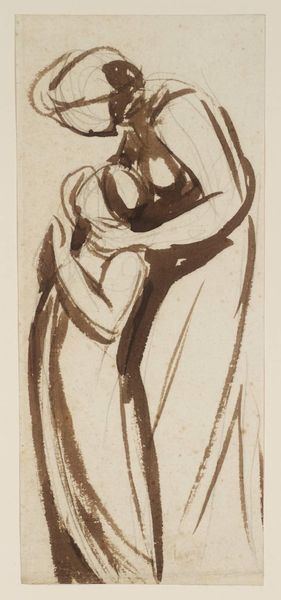
drawing, print, charcoal
#
portrait
#
drawing
# print
#
pencil sketch
#
charcoal drawing
#
pencil drawing
#
portrait drawing
#
charcoal
#
realism
Dimensions: image: 332 x 251 mm sheet: 430 x 279 mm
Copyright: National Gallery of Art: CC0 1.0
Editor: This is Alice L. Gershel Hunt's "Who Stand and Wait," a charcoal drawing from 1942. There's a palpable sense of sorrow and waiting that permeates the scene, maybe a touch of desperation. I'm struck by how these figures are enclosed, almost trapped, by the heavy shadows. How do you interpret this work within its historical context, considering it was made during World War II? Curator: The date is crucial. The pervasive mood of waiting and grief undoubtedly reflects the anxieties and uncertainties of wartime. How do you think the artist uses the visual language of realism to engage with the emotional and social realities of her time? Editor: I guess it makes the suffering feel more authentic, less romanticized? The realism gives a face to the worry a lot of people were likely experiencing. Does the drawing style also say something about the public role of art during that period? Curator: Absolutely. Realism, at that time, served as a powerful tool to document and reflect societal realities. Art served as witness and sometimes as propaganda. Also, consider how prints and drawings are often more accessible than paintings, expanding the audience who can engage with these ideas. What effect might this democratization of art have? Editor: So, the drawing itself becomes a kind of public service, documenting the shared anxieties, providing accessible art for a public in turmoil. It's more than just a personal expression. It reflects a communal experience, given its accessibility. Curator: Precisely. Hunt's work gives us a powerful window into a specific historical moment, revealing the complex relationship between art, society, and the politics of emotion. By understanding that art exists within a specific historical context, the artist’s intention also is better understood. Editor: I never really thought about realism as a strategic choice reflecting the wider function of art! Curator: These layers of context shape our understanding of any piece and let us think about the political, institutional, and cultural history it came from. It definitely makes art appreciation richer.
Comments
No comments
Be the first to comment and join the conversation on the ultimate creative platform.

